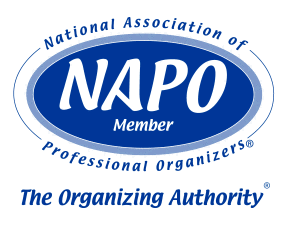 Yikes! Thanksgiving is just a few days away! Where did the time go?
Yikes! Thanksgiving is just a few days away! Where did the time go?
I assume anyone reading this is as short on time as I am, so I will cut to the chase. Here are a few quick things you can do to reduce your holiday stress:
1. Limit time obligations: I know it may sound like bad social behavior, but we truly don’t have to go to everything we are invited to. There are certainly some non-negotiables like our kids concerts, immediate-family gatherings, and the personal invitation from our boss, but there are a number of invites that our lack of attendance will probably not even be noticed. Do we really need to attend our condo association holiday gathering? How about the open house at the gym? Or the mass invite from your bank or Chamber of Commerce? These type of invites can be handled with a swift “thank you for inviting me, but I will be unable to attend this year.” End of conversation. Benefit: More time to spend on the things we really enjoy.
2. Reduce gift-giving: Our family did this years ago and it has been a life-saver ever since. Here’s how my shopping would have gone just for my side of the family if we hadn’t made this significant change: Parents: 1; Husband, son, and daughter-in-law: 3; Siblings and their spouses: 8; Nieces/Nephews and significant others: 23. Total: 35 Years ago, we decided as a family to draw names by generation and by couple. For example: I only purchase for one of my siblings and their significant other and my nieces/nephews draw names and they purchase for only one person/couple. My mom gets a gift from all of us . . . as it should be. Of course, I still purchase for my husband, son and daughter-in-law. Total: 5 This change has reduced our family gift-giving by 85%. Not only has no one complained, everyone has embraced the modification and appreciates the new-found gains. Benefit: More time, Less Stress, Financial Relief.
3. Make a gift-giving list and budget: This is one of the hardest things to do, but will pay off many times over in reduced stress and guilt. Budget an hour so for this process.
- Write down the amount of money you would feel comfortable spending for all your gift-giving. For some it’s $100, for others, it could be thousands. Acknowledging that there is a financial cap will start the process.
- Make a list of everyone you feel you need to purchase gifts for (refer to the above “Reduce gift-giving” and reduce the list if possible). If a gift suggestion pops into your head as you are making this list, write that down too.
- Once your list is complete, allocate funds based on your relationship with them. In some relationships, the spouse may get a larger percentage than your siblings; in other relationships, the spouse gets a thoughtful token gift and the bulk of the resources go to other people. Make this a very personal and thoughtful process.
- Once you are comfortable with the list, put together a shopping plan. This could be one large trip to the mall, or several small stops after work. Whatever works for you is what’s important.
- Always get a gift receipt! Chances are, every gift is not going to be perfect for every person on your list. Providing a gift receipt will both tell them it’s okay to exchange it, but will give them the means to do so without having to involve you in the “where did you get this?” conversation.
There are many, many additional ways to reduce your stress over the holidays including getting enough rest, eating right, and making sure to exercise. Take care of yourself, and you can take care of others.
Although is may sound quaint, remember the spirit of the holidays as a time to enjoy our friends and family.
Happy Holidays!
Cindy Jobs










